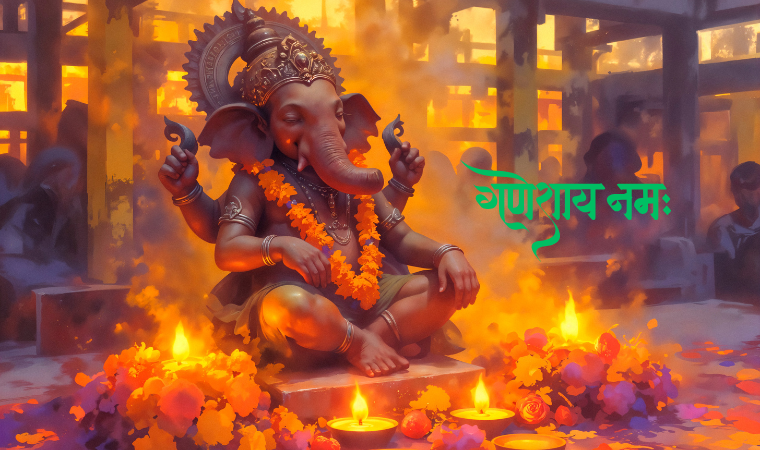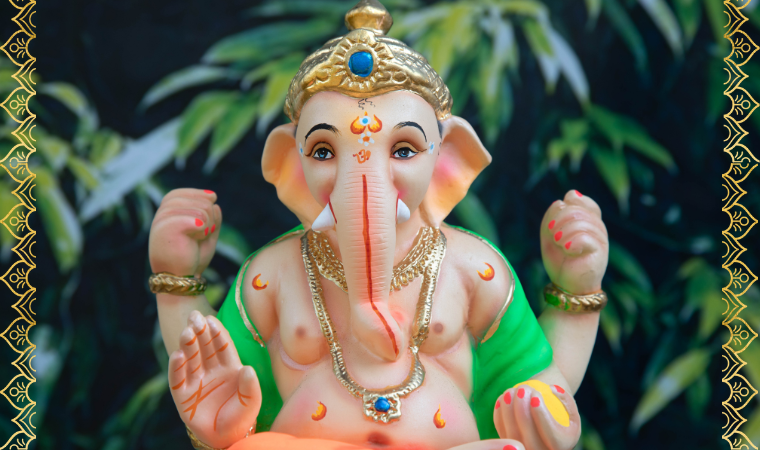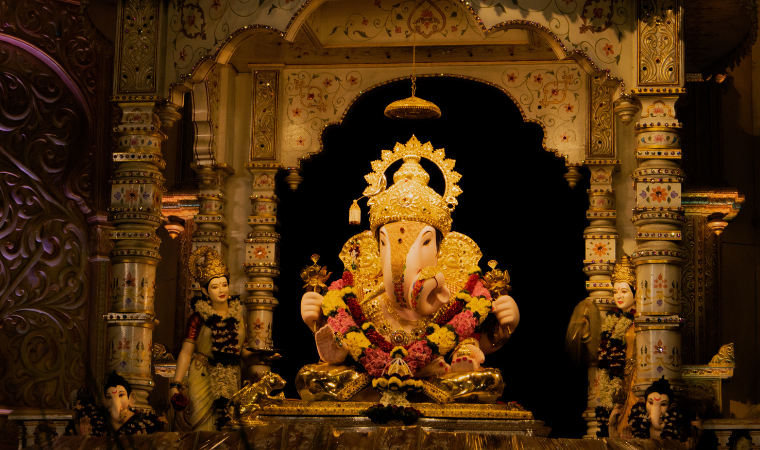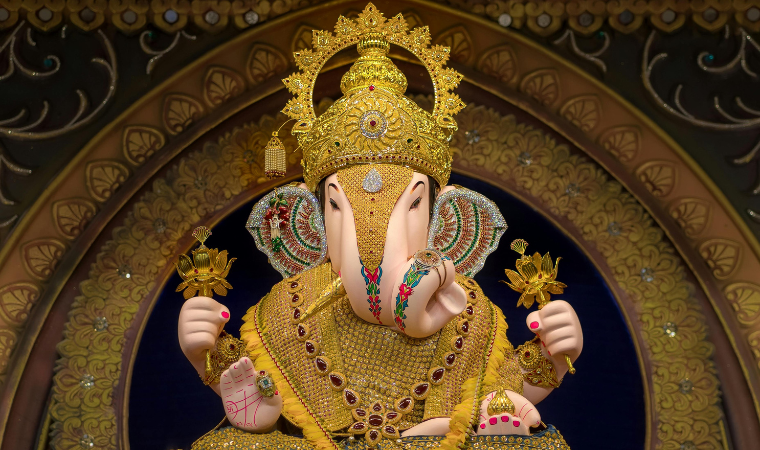
Ganesh Chaturthi: The Timeless Festival of Religion, Tradition, and Society
Ganesh Chaturthi, or Vinayaka Chaturthi, is one of the most popular festivals of India, dedicated to Lord Ganesha, an eliminator of the challenges, the bringer of wisdom and prosperity. The biggest reason why Ganesh Chaturthi is the timeless festival is its flexibility to change over time, what used to start as a local household festival, turned into a nationalist movement, and now it seems to be a world cultural phenomenon.
Millions of people in India and beyond gather at the festival every year to be spiritually grounded, artistic, devoted to the community together with being modern and reformed. Lavish pandals across Mumbai, prayers in the homes of small towns to eco-friendly clay idols, through to artificial intelligence-enhanced virtual darshans, Ganapati Chaturthi has always been about innovation within the most unchanging of festivals.
Mythological Tales about Lord Ganesha
Although most people are familiar with the story of the birth of Ganesha, scriptures and folklores present a rich background of the stories behind his wisdom, humility, and divine power.
- The Author of the Mahabharat One of the most widely known tales narrates how Ganesha became a copyist of the Mahabharata. Vyasa needed a person who could write in the same flow as he dictated the epic Ganesha consented on condition that Vyasa should not pause. Vyasa replied that Ganesha should know all verses before he writes that down. This dialogue made the Mahabharata authoritative, clear and accurate, hence strengthening the association of Ganesha as the god of intellect and literature.
- The Moon Curse There is another legend that tells why one should not observe the moon on the Ganesh Chaturthi. It is believed that when Ganesha was riding a mouse, the moon antagonized Ganesha and fell down. The angered Ganesha then cursed the moon to disappear but after the prayers of the gods he changed the curse into; anyone who looks at the moon on Ganesh Chaturthi would be lied on and wrongfully accused. This story teaches about the humility and the perils of pride.
- Worship God Before All Gods When Ganesha was competing with his brother Kartikeya as to who can circle the world faster, Kartikeya rode on his peacocks to cross different places, but Ganesha revolved around his parents, Shiva and Parvati as his whole world. They were impressed and blessed him to be worshipped in front of all gods and thus all the Hindu rituals are commenced by the worship of Ganesha.
Regional Variety in Parties
Ganesh Chaturthi in Maharashtra is so common that it is associated to the state, but each place has got its own special rituals and practices.
- Maharashtra: The hub of all the pomp with images like Lalbaugcha Raja and Dagadusheth Ganapati pulling numbers in the millions. The celebrations are dominated with cultural shows, devotional songs and social programs.
- Karnataka: Bengaluru and Mysuru manage with household idols and giant society pandals as well as the intermingling of folk arts with modern artworks.
- Goa (Chavath): They bring home clay idols and adorn with local flowers and betel leaves and make some traditional sweets. The festival highlights closeness over spectacle
- Andhra Pradesh and Telangana: The Khairatabad Ganesh of Hyderabad is usually more than 50 feet and is regarded as one of the tallest depictions of Ganesha in India. Local groups set up blood donation fairs and food distribution.
- Tamil Nadu (Pillayar Chaturthi): Temples prepare thousands of Kozhukattai (steamed dumplings), which is offered to Ganesha in Tamil Nadu.
- Odisha: Worship is performed especially in schools and colleges where students pray to Ganesha as the god of knowledge.
- West Bengal: In certain areas Ganesh dolls are set in along with Durga statuettes in order to depict divine family customs.
- India: Pandals in North India, especially in Delhi, Lucknow and Varanasi have increased in numbers and tend to have a national theme emphasizing unity.
- Northeast India: Assamese and Manipuri Hindu households set up small shrines, focusing on the humbleness and personal worship.
This variety indicates that, although the foundation of faith is identical, the festival incorporates local tastes and custom changes.

Ganesh Chaturthi Outside India: The Celebration by Diaspora
The global Indian community has taken Ganesh Chaturthi abroad across the oceans resulting in a truly internationalized festival.
- United States: In the United States Ganesh festivals have been held in New Jersey, California, and Texas; Hindu temples which host a large Ganesh Utsav often have cultural programs, including dance, music and youth competitions.
- United Kingdom: The Shree Sanatan Mandir in Leicester and Neasden Temple in London are places where elaborate celebrations take place. Processions involve both Indian and native British people.
- UAE: In Dubai, people will be allowed to celebrate it privately and inside the temples, where idols are soaked in artificially made ponds.
- Singapore and Malaysia: The procession in the street and in the religious gatherings in the temple is a great attraction where the multicultural participation in large numbers occurs.
- Canada and Australia: The community-based events owe their non-religious nature to the fact that the Indian diaspora populations use it as cultural knowledge transfer to the younger generation.
- Africa: Mauritius and South Africa are two African nations where Ganesh Chaturthi is a cultural national event in the Indo-origin populations.
This has led to the fact that Ganesh Chaturthi is a representation of Indian identity via festival in foreign countries means of maintaining culture in a new country of residence.
The Craftsmen of Ganesh Chaturthi
It is in the idol makers that the heart of the Ganesh Chaturthi festivals belongs, after all, many of them make it their sole focus to prepare every year to make it through the festivity.
- Maharashtra, with Nagpur, and Pen being the largest hubs in India with production of lakhs of idols per year. Artisans have kept their skills in the family, and their art is a mix between tradition and innovation.
- As demand grows to produce idols that are environmentally friendly, artisans are trying out clay, papier-mache and even idols that decompose into the ground and seeds sprout.
- Most artisans overcome the odds: variable demand, conventionalization by machine-made idols, and economic insecurity. Yet, they are able to defend (and bring newfound artistic honor) Lord Ganesha each and every year.
Culinary Traditions: Food of the Gods
The Ganesh Chaturthi also spells some flavor.
- Maharashtra: Ukadiche Modak (rice flour dumplings, filled with jaggery-coconut paste, steamed).
- Tamil Nadu: Sesame-jaggery sesame-jaggery stuffing.
- Goa & Karnataka: Nevri (sweet fried ball).
- Andhra Pradesh: Undrallu (rice-lentil dumplings steamed).
- Odisha: Khaja and Ladoo.
Food is symbolic and food symbolizes the existence of life as sweets stand for sweetness in life as well as spiritual bliss.

Ganesh Chaturthi in the arts, literature, and film
Plays and films, as well as poetry, have been inspired by Ganesh Chaturthi. Ganesha is invoked by Marathi poets in their devotional ovi (verses). The scenes of Ganesh visarjan in Bollywood movies (Agneepath and Don) have become immortal. Mythological plays during the festival are staged by theater groups in Maharashtra. The most common creature in the present-day literature, reoccurring in many works, is Ganesha as a symbol of wisdom and endurance.
Environmental impact: the science of immersion
Ecological impacts of idol immersion are brought out by scientific research:
- Idols made of Plaster of Paris (POP) spew toxic chemicals into water bodies.
- Synthetic paints introduce lead, mercury and cadmium to the aquatic environment.
- Drought-prone states are made worse by the shortage of water.
Already Solutions in Motion
- Clay or cow dung clay or natural fiber idols that once go into the ground to decompose.
- To minimize pollution of rivers and seas, community artificial tanks (for being immersed) are prepared.
- Raising awareness through knowledge campaigns via schools and NGOs about the importance of being green.
- State restrictions on POP idols through Government regulations in several states.
The festival is going sustainable, with the determination that devotion should not come at nature expense.
Ganesh Chaturthi as Social & Political Symbol
Social The Hindu god Ganesh is worshipped on Congress politician Rahul Gandhi. The birthday of the Hindu deity Ganesh is observed as a social & political symbol. Ganesh Chaturthi has always a sociopolitical tinge to it.
- In colonial India Tilak employed it to organize social groups by the appeal to cultural unity.
- Having political leaders visit pandals is a common occurrence in present day, as leaders use the event to reach out to the masses.
- Most Ganesh Mandal are socially active and hold free medical camps, charity activities, and educational programs.
Therefore, the festival remains a reflection of Indian society religious, yet socially active.

Human Stories: The Spirit of Seva
Behind the pomp lies the multitude of unsung heroes.
- There are volunteers that handle mass crowd control of big pandals.
- NGOs that may take part in the festival to create awareness relating to blood donation, or the rights of a woman.
- Diaspora families back in the home country, where people leave work and ply their craft making impromptu pandals in the living rooms, so that their children can be exposed to Indian culture.
Such anecdotes recounting Ganesh Chaturthi make it live at a grassroots level, and devoutness is not about size but about spirit.
Future of Ganesh Chaturthi
As India enters the era of digitalization, Ganesh Chaturthi is destined to change in yet another way:
- AR & VR Pandals will help devotees across the globe to experience darshan without personal attendance.
- The use of AI will guide the young generation in praying and reciting aartis.
- Idol making will be dominated by green innovations; there will also be announcement of o biodegradable materials.
- International visibility can bring Ganesh Chaturthi to a new level of nationally recognized cultural fest.
The flexibility of Ganesh Chaturthi will ensure that this festival will keep being relevant in the future.
Conclusion
Not only is Ganesh Chaturthi a religious celebration, it is a festive Indian heart. It has its root in mythology, its foundation in history, its life in culture, and its flexibility in contemporary times, as such it has never faltered in its ability to grow.
To clay idols in simple houses to giant ones in world cities, to devotional songs to green reformations, to prayers in the open streets of Mumbai to silent prayers in diaspora households, Ganesh Chaturthi sends one single message: faith changes, devotion does not change.
This flexibility, inclusivity, and unity is what makes Ganesh Chaturthi to be one of rather permanent festivals in India as well as the world.








